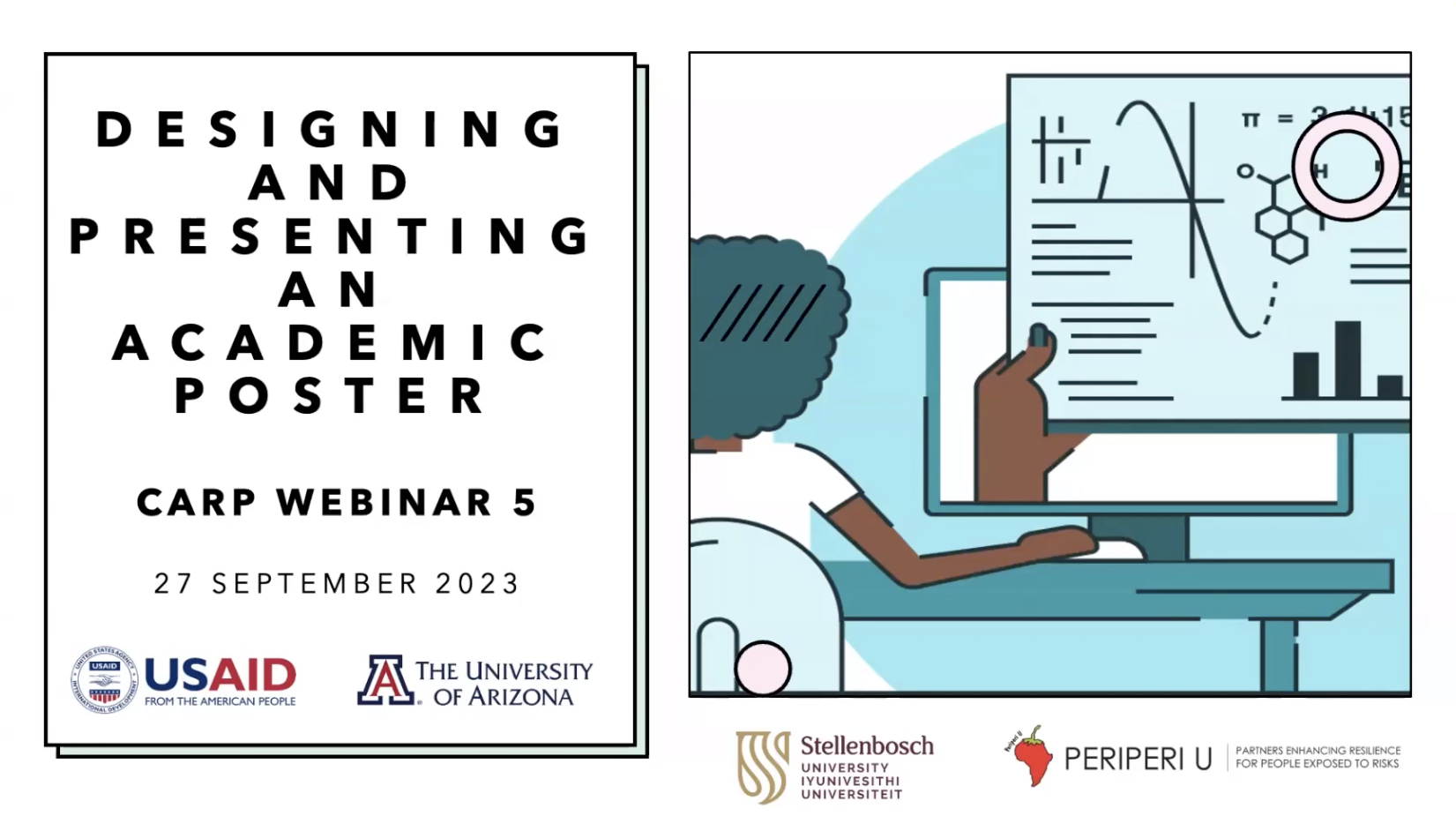The Climate Adaptation Research Program recently hosted its 5th webinar on academic poster design and presentation, hosted by USAID in collaboration with the University of Arizona, Stellenbosch University, and PERIPERI U, it was an insightful event that delved into the intricacies of crafting effective academic posters. The webinar focused on essential aspects such as planning, design principles, content, and tips for presenting academic posters.
The event began with exploring the purpose of academic posters, visual representations of research or scholarly work often showcased at conferences, symposia, and workshops. Attendees actively participated in a poll, revealing varying levels of experience with academic posters, with approximately 50% having designed and presented posters before.
The main speaker, Julia Davies, emphasized the significance of academic posters as concise tools to communicate complex research findings, fostering accessibility to diverse audiences. Beyond dissemination, posters facilitate networking, as highlighted by a personal anecdote of how networking around a poster led to significant opportunities for a Ph.D. program.
The webinar discussed crucial steps in designing effective academic posters, including planning, adherence to guidelines, and consideration of the target audience. The importance of distilling a key message and exploring available templates to enhance visual appeal was underscored. Specifics like size, orientation, and font guidelines were detailed, with practical tips for setting up poster dimensions in PowerPoint.

The session transitioned to fundamental design principles for impactful posters. Elements such as balance, alignment, contrast, consistency, hierarchy, and simplicity were explored, all contributing to an organized and visually appealing layout. In a Zoom poll comparing two example posters, participants favored option two for its clear layout and simplicity, emphasizing the importance of design choices.
The attendees were encouraged to include essential elements such as a prominent title, author information, and well-structured sections. Emphasis was placed on readability, recommending bullet points, appropriate font sizes, and easy-to-read fonts.
Visual elements, including images, graphs, or figures, were addressed with a focus on simplicity and high resolution for clarity. Proper use of color, white space, labeling, and contrast were highlighted as contributors to a well-designed and practical academic poster.
The webinar sought to share knowledge and develop skills, equipping participants with the necessary tools to communicate their research effectively through visually compelling posters. After the successful conclusion of the webinar and Tanzania workshop, scholars now have valuable insights into creating impactful academic posters that enhance the communication of research findings on a global stage.
The full recording can be found here: https://www.youtube.com/watch?v=Uaazd6Aoyag


